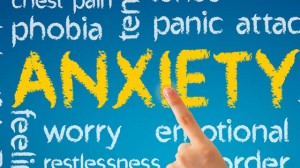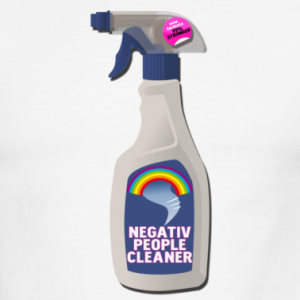Anxiety disorders are the most common mental illness in the U.S., affecting 40 million adults in the United States age 18 and older (18% of U.S. population). (Anxiety and Depression Association of America)
Anxiety disorders are real and serious. Worry and fear are constant and overwhelming. People dealing with depression often suffer from anxiety disorders. The reverse is also true. Understanding anxiety disorders can help you deal with depression. What are 4 main types of anxiety disorders in the United States?
- Generalized Anxiety Disorder (GAD). This affects about 3% of the U.S. population. GAD is where you worry for no apparent reason. You expect the worst no matter what the situation or how good your day is going. It’s that impending sense of doom over the horizon. Even getting out of bed and thinking about your day will create anxiety. You can’t stop worrying though you know everything is okay. Anxiety is out of your control. When anxiety is mild, you can function fairly well as long as you avoid situations that trigger anxiety. When anxiety is severe, it’s almost impossible to function normally.
- Panic Disorder. This anxiety disorder affects about 2.7% of the U.S. population. It’s usually called panic attacks. Panic attacks happen randomly, sometimes even while you sleep. You start worrying about when the next panic attack will happen, which adds to your overall anxiety. Panic disorder often comes with depression. The good news is panic disorders are easily treated. You can learn to control it or in some cases it can even disappear.
- Social Anxiety Disorder. This affects 6.8% of the U.S. population. This is an extreme fear of being judged by others socially or in other situations. It’s not the same as being shy which people often mistake it for. A person with social anxiety disorder knows the fear is unreasonable or too much, but can’t control the level of fear that’s felt. You feel powerless, alone, and even ashamed because you fear you will humiliate or embarrass yourself in public. Cognitive therapy can treat social anxiety disorder.
- Specific Phobias. This anxiety disorder affects 8.7% of the U.S. population. PTSD is sometimes ranked in with specific phobias. These phobias can start in childhood or can come about suddenly. It’s caused by a bad or traumatic experience. You know your fear is irrational but you can’t control it and you become extremely anxious. Specific phobias are treatable using Pavlovian conditioning and cognitive therapy.
Terezia Farkas. International Bestselling Author, Huffington Post/ CNN contributor, columnist of Depression Help. Focus is mental health. Her bestseller Heart of Love Evolution – Surviving Depression is available on Amazon. Website: www.tereziafarkas.com Follow on Twitter.


